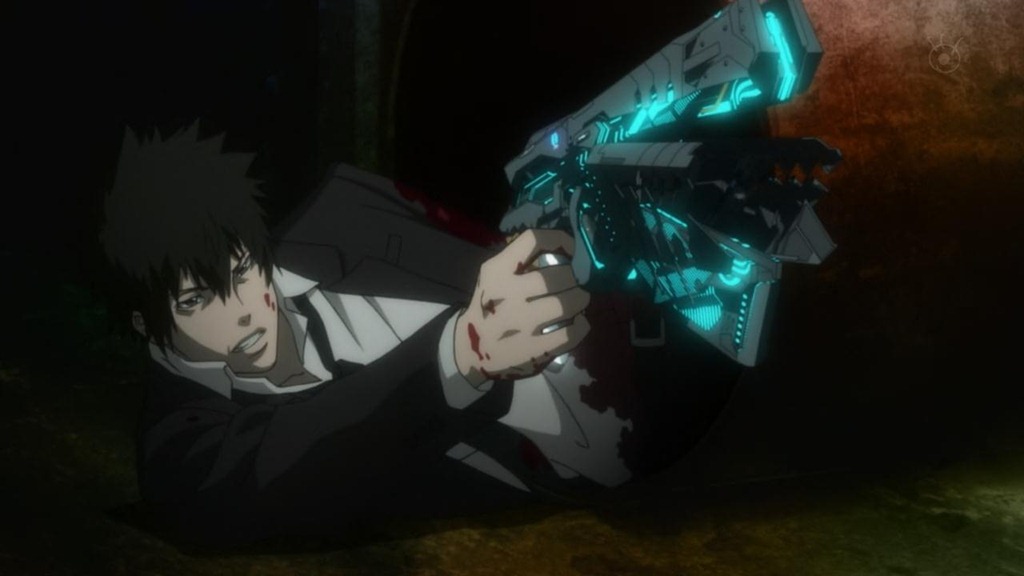It’s my birthday! I’m 27 today. I’ve been blogging since I was 22!
I’ve celebrated five birthdays on Otaku Journalist now. Here are the entries for my 23rd birthday, my 24th birthday, my 25th birthday, and my 26th birthday.
Since I’m participating in the Twelve Days of Anime blogging event this year, I want to take this entry to write about my five absolute favorite anime right now. Most of these shows did not come out in 2013. But I did watch each one of them this year, whether for the first time or the fifth:
Natsume’s Book of Friends
I first heard about this anime in Charles Dunbar’s yokai panel, so when I saw that there were four seasons on Crunchyroll, it was a no-brainer pick.
There’s not much more I can say about this show that I didn’t already write in my April review. But never has taking a chance on an anime I only knew about abstractly paid off so much. Though heavily Shinto-inspired and fantastic, it’s the bittersweet, character given plot that gives Natsume its soul.
The Eccentric Family
Clearly, I’ve been having a yokai moment in 2013. Here’s another Shinto-inspired fantasy—this time featuring a family of tanuki—that made my list.
As I wrote in my October review, this anime affected me most deeply as a sincere portrayal of human nature in mythological Kyoto. This drama takes place against rich, color-saturated backdrops of what this foreigner has always assumed Japan to be. It’s a magnificent flight of fancy that imagines a world humans unknowingly share with the yokai around them.
Higurashi no Naku Koro ni
I’ve wanted to write about this anime since Halloween, but I was reluctant to promote an anime that could only be gotten illegally or for around $500, no matter how much I loved it. Now, however, this unsettling horror can be gotten on Amazon Instant Video for about $2 an episode.
What really got me about Higurashi was that the art style is so moe blob and boring that I expected a storyline that’s equally bland. It lulls us into complacency with unimportant subplots about Keiichi’s games with his friends at school. And then—BOOM—killer lolis.
Mobile Fighter G Gundam
They’re called the classics for a reason. And the reason I’m still watching this ‘94 show now is because it’s too over-the-top ridiculous to ever be forgotten. For example, it’s the only show in which an actual horse pilots a horse-shaped Gundam.
Needless to say, John and I have watched a lot of the Gundam franchise, but G Gundam is the black sheep of the family. Gundams are piloted with martial arts instead of technical know-how, and all the outrageous tropes of fighting anime can be found here. The Racist Robot Olympics, as the Gundam fights can be called, are rife with ridiculous stereotypes, like Mexico being portrayed by a cactus Gundam, or India by a cobra in a giant bowl. But with every nation equally ridiculed (except, of course, Japan), G Gundam is more hilariously out-of-touch than harmful.
Nerima Daikon Brothers
It’s been almost a decade since I first watched it, and still can’t seem to shake this one off the list. As I wrote in my review about a year ago, this is a very silly and cheaply produced anime, but it’s a fast-paced musical that never fails to make me feel good.
This year, I was a bit of a bridezilla about my wedding, stressing out about details that ultimately turned out not to matter at all. One night, after—I admit—crying over the reception menu, I popped in my Nerima Daikon Brothers DVD. John must have thought I was in hysterics as I went from inconsolable to laughing and singing in 20 minutes.
This post is the eighth installment of The Twelve Days Of Anime, a blogging series in which anime fans write about shows that inspired or impressed on them this year.











